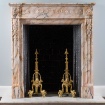
What would you do if you could be anyone for the day? All of Venice is filled with a panoply of oddities. Everywhere peacocking citizens stroll and pose, and Saint Mark’s Square is ablaze with a carnival. Strange glittering masks curve and curl and squish and protrude to make all the people into bejewelled parrots and bedazzled Zorros. Under the anonymity of a mask you can choose who to be, and under the bizarre contortions of millions of outfits with tricornes, corsets, wigs, florals and brocades anyone could be a Casanova or Marie Antoinette. Overnight, ‘La Serenissima’ is transformed into an opulent rainbow of plague doctors, harlequins and pompadours, and the Venice Carnival has begun.

The Venice Carnival is deeply popular, attracting around 3 million visitors each February. Everyone should go to Venice, simply to enjoy the spectacle of gilded domes, lithe gondoliers and burnished brick towers, drinking in the cool skies above Canaletto’s canals. Yet to see this incomparable city alive with an eighteenth-century circus, a menagerie of vibrant and anonymous dandies, is surreal, beautiful and absolutely unique.

The Venice Carnival has an ancient pedigree. Tradition holds that it was established in the year 1162 to celebrate Venice’s military victory over the neighbouring city of Aquilea. The extravagance of the occasion was all the more exciting for being a democratic event, the carnival being the one time of the year where Venice’s poor could dress as lords and ladies and get a smack of the luxury that the city oligarchs withheld from them. Normally the poor of Venice were restricted by sumptuary laws which forbade them from dressing like the moneyed and ruling classes; one need not imagine the liberated and sybarite atmosphere that would result from the shattering of that taboo, as its memory still lurks in the Venice Carnival of today.

The central element of the carnival are the outfits in which revellers can dissolve themselves. Participation is open to all, and Venice Carnival masks and costumes are available to rent, in case masquerades are not a regular occurrence at home. The Venice Carnival masks have various meanings and origins, and range from traditional masks like the broad bauta or the androgynous gnaga, which allowed men to dress as women, to more modern fare like medusa headdresses. You can resemble a bird of paradise, festooned with feathers, or go for something a little more demure and mysterious: either way, turn up to the Best Mask Competition to test your mettle.

Studded through the Venice Carnival schedule are some several unmissable events, around which one can construct a flamboyant stay. Firstly, there is the inauguration of the carnival called La Festa Veneziana, a series of celebrations over the first weekend. These start off with spectacular water shows and acrobatic displays on the Saturday, followed by the historic regatta on the Sunday, in which a veritable armada of jesters and Lewis Carroll characters come punting down the canals, awash with fabulous fabrics. Furthermore, there is the Festa delle Maria parade, another historical oddity with an even older provenance, which celebrates the rescuing of twelve bejewelled maidens from pirates, who abducted them in the year 973. Whereas once the girls in the parade would be of the poorest families, and the Doge, the ruler of Venice, would choose to pay their dowries, today it takes the form of an elaborate and intriguing beauty pageant. Finally, the Koh-i-Noor of the events are the balls, both Il Ballo del Doge and the Mascheranda Grand Ball, where only the swishest of mask-wearing socialites and libertines may convene. An elaborate dinner, champagne, suggestive dance and theatre: this is the exquisite heart of the Venice Carnival at its most opulent, and most salacious.
Finally, there is an abundance of hotels and eateries available during Venice Carnival. From Harry’s Bar, which features in Evelyn Waugh’s recollection of the 1930s, Brideshead Revisited, and has hosted Hemmingway, Truman Capote and Orson Welles, to a broad selection of Michelin recommended establishments. As for sleeping, the palazzos are oozing with gold and brass, and staying at Venice’s luxury establishments will make you feel like a merchant-prince, adrift in wine, gems and aromatic spices from the orient.

The crooked brick buildings, the Byzantine domes, winged lions, and parades of glittering masks, ‘La Serenissima’ has it all and during Venice Carnival is the best time to go. There is always room for another masked wanderer in this city of romance, wonder and delight. To get lost in a miasma of sea fog, indulgent wine, good company, all amidst crowds of gaudy harlequins is an incomparable experience. Get lost in the rich mists and revels of the city and let the Casanova within guide you on your way.


